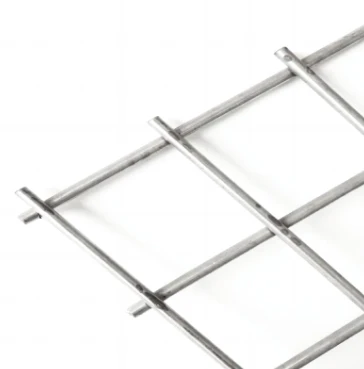Understanding Various Sizes of Steel Mesh for Construction Projects
Understanding Steel Mesh Sizes A Comprehensive Guide
Steel mesh, or wire mesh, is a widely used construction material known for its strength and versatility. It is a grid-like structure made from interwoven steel wires, with applications ranging from construction and fencing to automotive and decorative elements. One of the fundamental aspects of using steel mesh effectively lies in understanding its sizes and specifications. This article explores the various sizes of steel mesh, their applications, and why choosing the right size is crucial for your project.
The Basics of Steel Mesh Sizes
Steel mesh sizes are determined by two critical factors the diameter of the wire and the spacing between the wires. These measurements directly influence the mesh's load-bearing capacity, flexibility, and the type of applications it is suited for. Typically, the wire diameter is expressed in millimeters (mm) or gauges, while the spacing is indicated in millimeters or inches.
For instance, common wire diameters range from 2.5 mm to 12 mm, with larger diameters providing greater strength and load-bearing capabilities. The spacing between the wires can vary significantly, with typical configurations including 50 mm x 50 mm, 75 mm x 75 mm, and finer configurations like 25 mm x 25 mm. The choice of size will depend largely on its intended use.
Applications of Different Steel Mesh Sizes
1. Construction In construction, larger sizes of steel mesh (e.g., 6 mm diameter with 150 mm spacing) are often used in concrete reinforcement. They help to distribute loads evenly and prevent cracking. Smaller sizes, such as 4 mm diameter with 50 mm spacing, are frequently used for applications requiring enhanced tensile strength, such as in pavements and slabs.
2. Fencing For fencing applications, a lighter gauge mesh (e.g., 2.5 mm to 4 mm in diameter) with broader spacing (e.g., 100 mm x 100 mm) is typically sufficient. This provides security while allowing for visibility and airflow.
3. Decorative Uses In architectural and decorative applications, the aesthetic aspect of steel mesh comes into play. Smaller openings and variations in wire thickness can create unique patterns and textures that enhance visual appeal, making them popular for arts and crafts, partitioning, and interior design.
steel mesh sizes

4. Automotive Automotive manufacturers often utilize specialized steel mesh panels that adhere to specific size standards to ensure performance and safety in vehicles. These panels necessitate precise measurements to meet manufacturer requirements.
Factors to Consider When Choosing Steel Mesh Sizes
When selecting the appropriate steel mesh size for your project, consider the following factors
- Load Requirements Understand the weight that the mesh will need to support. Larger and thicker steel mesh will generally provide greater load capacity.
- Environmental Conditions In corrosive environments, such as coastal areas, a galvanized or stainless steel mesh with a larger diameter may be necessary to withstand harsh conditions.
- Installation Area Assessing the available space for installation can guide what size mesh is practical. In tight spaces, finer mesh may be a better choice.
- Aesthetics For decorative purposes, consider how different mesh sizes will interact with the overall design. Textures and visual impact can vary greatly with different wire sizes and spacing.
Conclusion
Understanding steel mesh sizes is crucial in leveraging the full benefits of its applications. By selecting the right size based on load-bearing needs, environmental factors, and design requirements, you can ensure the integrity, functionality, and aesthetic appeal of your projects. Whether it's reinforcing concrete structures or creating stunning visual elements, the choices you make regarding steel mesh will significantly impact the success and durability of your work. Always consult with professionals to determine the best specifications tailored to your project's unique needs, ensuring a successful outcome.
-
Space-Saving Chain Fence Hacks Vertical Gardening with Cyclone MeshNewsJul.16,2025
-
Innovations in Iron Nail Wire Production for Modern ConstructionNewsJul.16,2025
-
Creative Uses of Wire Netting Fence in Modern Landscape DesignNewsJul.16,2025
-
Barbed Wire Fence Innovations in Anti-Climb TechnologyNewsJul.16,2025
-
Architectural Uses of Umbrella Nails for Aesthetic Roof DesignsNewsJul.16,2025
-
Architectural Uses of Razor Barbed Wire in Secure Urban DesignNewsJul.16,2025




